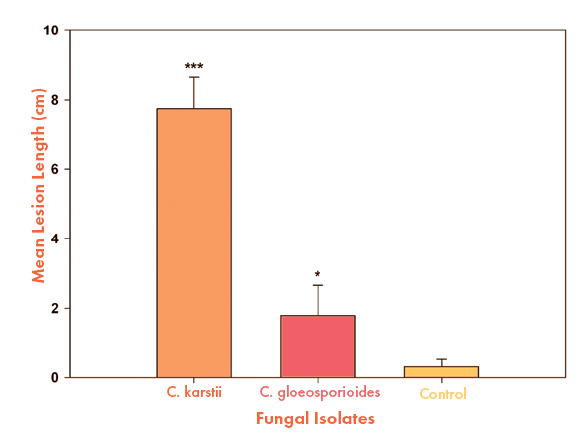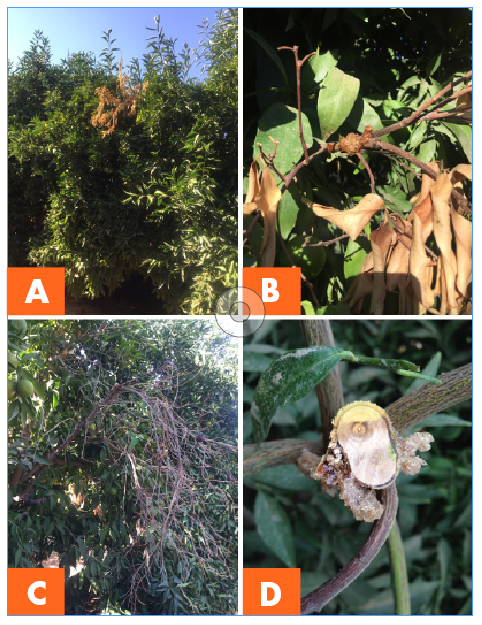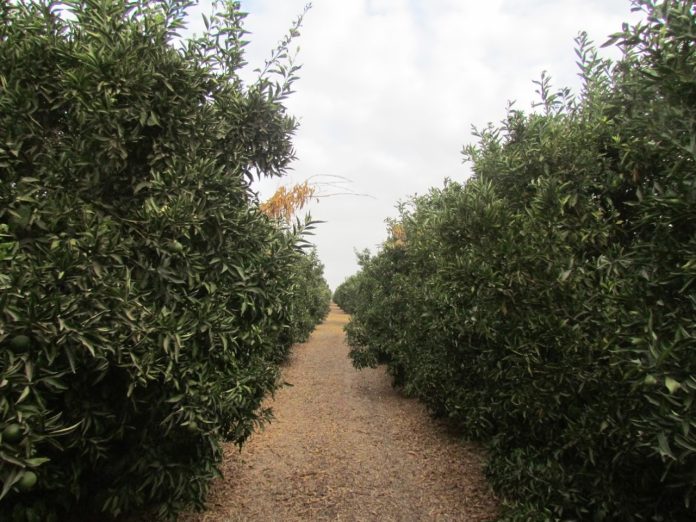A new fungal pathogen that causes twig and shoot dieback and woody cankers in citrus can be found in Central California orchards and citrus orchardists should be on the lookout for symptoms in early summer months. Symptoms are caused by the fungal species Colletotrichum, which is a well-known pathogen in citrus. This new species of Colletotrichum, C. karsti, is distinct from C. gloeosporioides, which causes the post harvest disease anthracnose. Recent field surveys in the Central Valley found both species in citrus.
According to UC researchers Dr. Akif Eskalen and Dr. Florent Trouillas, the most characteristic symptoms of this disease are the gum pockets which appear on young shoots either alone or in clusters and the dieback of twigs and shoots.

These symptoms were reported in clementine, mandarin and navel orange varieties. Pathogenicity tests on clementine mandarin also confirmed that C. karstii is a more aggressive pathogen of citrus in California compared to C. gloeosporioides. Research continues to focus on understanding the biology of the fungal pathogens and factors that influence the disease expression with hopes of developing management strategies. There is no chemical control as the pathogen survives in the cambium layer. Pruning out infected wood and disposing of it outside the orchard can reduce the inoculum level in an orchard.
Greg Douhan, UCCE area citrus advisor for Tulare, Fresno and Madera counties, said the infections, first noticed in the valley in 2013, has been seen in many citrus varieties. Infections can be minor, with a dieback of a single shoot on a tree or significant with woody cankers and multiple shoots affected. All age trees can become infected.

Outbreaks of this disease in citrus trees is likely due to environmental factors, Douhan said. Outbreaks may be noticeable one year and not seen the next. Relative humidity and precipitation in California citrus growing regions are known to play a role in Colletotrichum infections. Conidia are dispersed by rain and humidity is conducive to spread of the pathogen. A spore trap study of the Colletotrichum species showed higher frequency during wet months, but there are additional avenues to infections. Wounding is also known to be an opening for infection. Wind and sand damage also give the species an opportunity to colonize citrus. Douhan said the Central Valley’s drier climate is likely a limiting factor to spread of the disease.
















